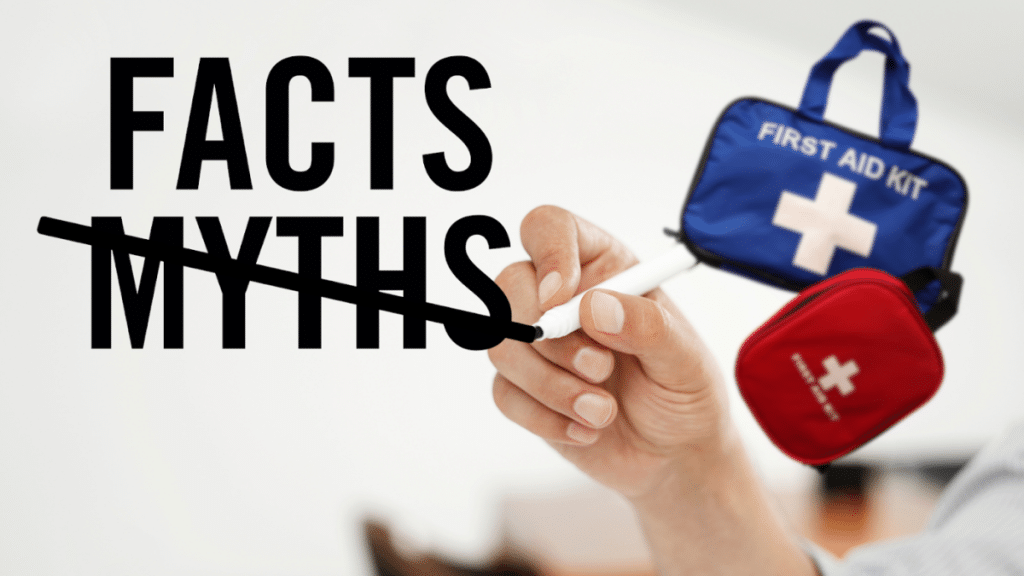In today’s world, as advancements in medicine continue to redefine healthcare practices, there remains a persistent issue of outdated and sometimes dangerous first aid myths perpetuated by popular media. Whether seen in beloved TV shows, movies, or shared through word of mouth, these myths can mislead and potentially harm individuals who rely on them in emergency situations. It’s important for people to know that TV shows do not always display the proper method to help a victim; thus, getting first aid training, like the one from CPR Vaughan, can give you the skills and knowledge to do it effectively.
Hyperventilation: Paper Bag Myth
One prevalent myth seen on screens is the use of a paper bag to alleviate hyperventilation. While often depicted as a quick fix, this method is ineffective and hazardous. Hyperventilation, commonly caused by asthma, panic attacks, or anxiety, requires a different approach. Rather than trapping carbon dioxide in a paper bag, which can lead to dangerous levels of CO2 buildup, it is safer to encourage the affected person to breathe slowly and deeply. This helps stabilize their breathing pattern naturally.
Tick Removal: The Burning Myth
Another dangerous misconception concerns tick removal. Popular belief suggests burning ticks off the skin, which not only fails to remove the tick effectively but also increases the risk of skin burns and exposure to diseases like Lyme disease. The correct method involves using fine-tipped tweezers to grasp the tick as close to the skin as possible and gently pulling it straight out with steady pressure. This minimizes the chances of leaving behind the tick’s mouthparts in the skin.
Venomous Bites: Snake and Spider Misconceptions
When it comes to venomous bites, such as those from snakes or spiders, misinformation can lead to delays in appropriate treatment. Contrary to common belief, sucking out venom or applying ice to the wound does not effectively manage the situation. For snake bites, the recommended action includes keeping the victim calm, immobilizing the affected limb, and seeking immediate medical assistance. Similarly, cleaning the bite area with water and applying a cold compress for venomous spider bites can help alleviate pain and swelling. Still, medical attention is crucial to administer antivenom if necessary.
Concussions: Sleeping Myth
Media also often misrepresents the severity of certain conditions, such as concussions and heart attacks. For instance, there is a persistent myth that a person with a concussion should not be allowed to fall asleep due to the risk of worsening symptoms or even death. In reality, it is generally safe for someone with a concussion to sleep as long as they have been assessed by medical professionals and their condition is monitored periodically.
Heart Attacks: Urgency of Medical Attention
Additionally, misconceptions about the urgency of certain medical conditions like heart attacks can lead to delayed medical intervention. It’s crucial to call emergency services immediately upon experiencing symptoms like chest pain, regardless of its severity, as prompt treatment significantly improves survival and recovery.
CPR Reality Check
Understanding the correct procedures for common medical emergencies can significantly affect outcomes. For instance, in CPR (cardiopulmonary resuscitation), which is frequently shown in media as a dramatic procedure instantly bringing someone back to life, the reality is that CPR is a vital intervention that aims to maintain blood circulation to critical organs until professional medical help arrives. Proper training in CPR emphasizes correct technique, such as effective chest compressions and rescue breaths, rather than relying on strength alone.
In conclusion, while entertainment media can be a source of enjoyment and education, it is essential to distinguish between factual information and fictionalized portrayals, especially when it comes to matters of health and safety. By debunking these myths and promoting accurate first aid practices, we can empower individuals to respond effectively during emergencies and potentially save lives.
